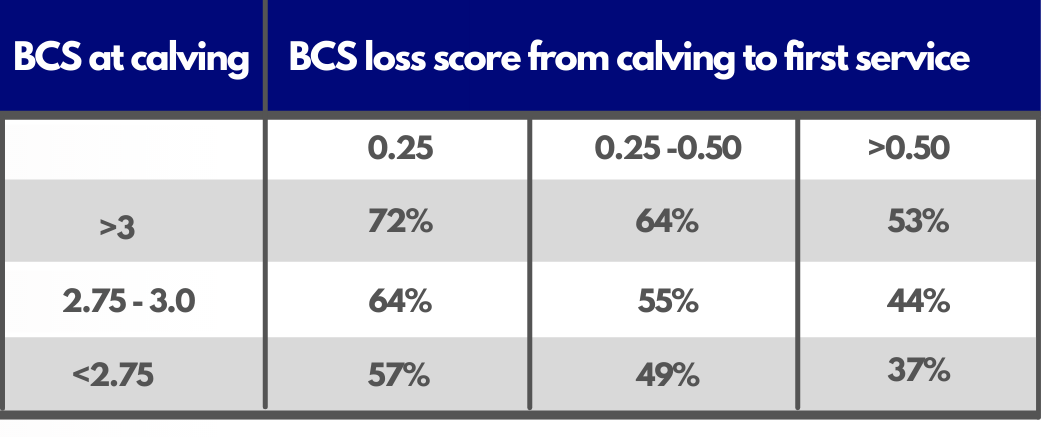The consequences of failing to feed a freshly calved cow adequately during the first number of weeks before, and after calving, can be significant and can lead to costs such as reduced production, slower returns to heat cyclicity, and poor fertility.
The main objective on farm over the next 2 months is getting dairy cows to peak production, optimising milk solids output, avoiding metabolic problems, and holding condition until getting the cow back in-calf.
Cow type will be the main decision-making factor to consider when assessing the cow’s nutritional requirements after calving. Knowing what output level is appropriate for the genetics of the cow being farmed and matching it on the input side is critical.

In order to meet a cow’s output requirements, is it essential to ensure body condition is not compromised pre-breeding. The nutrition of the freshly calved cow in the post-calving period has the greatest impact on improving submission and conception rates.
In the post-calving period, cows will produce more milk than their feed intake can provide for and the result is Body Condition Score (BCS) loss due to Negative Energy Balance (NEB). Dry matter intake will increase by 0.75 – 1.0Kgs per week for the first 8 weeks of lactation. It will be 8 weeks before maximum intake is reached.
Irish and international research has shown time and time again, that if the post-calving period of NEB is prolonged, then fertility rates in the upcoming breeding season will be significantly affected. Cows that lose < 0.5 BCS (25Kgs) ovulate 15 days earlier and reach 1st service 14 days earlier than cows losing 1 BCS.

Monitor your herd nutrition using milk production data/processor information
Monitoring the change in body condition can be difficult to pick up in the short-term, which can often result in it being identified too late. Milk production and constituents’ data are valuable tools for monitoring the current nutritional status of the herd in the short-term.
- Low milk protein levels in the post-calving period are an indicator of reduced energy (poor quality forage)/dry matter intake.
- High butterfat concentration in early lactation may be a sign of a cow milking from her back (breed dependant)
- The herds Fat:Protein ratio (calculated by dividing the butterfat % by protein %) is a useful indicator of the energy balance of the herd’s diet in early lactation.
-
- A ratio of >1.4 has been shown to indicate excessive condition loss in Friesian herds (A slightly higher ratio than this will be tolerable in Jersey cross herds).
Weather hampering getting grass into the diet
Grazing has been compromised on farms due to the weather and poor underfoot conditions. Where grazing is delayed, and forage quality is poor, ensure your cows requirements are being met via supplementation to avoid excessive body condition loss. On/off grazing should be practised where possible on-farm.
Take a look at our Welmin Mineral Range, which features a number of products suitable to help you get the most from your freshly calved cow.
Get In Touch
Our team are available to help you ensure maximum performance from your freshly calved cow. To find out more, contact your local Agritech sales advisor.


